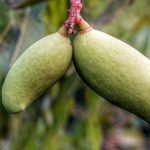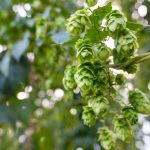
PROFITABLE AND GROWING CROPS: MARIGOLD
Nowadays, although medicinal plants have always aroused much interest and have always been highly appreciated, this is a growing sector, especially in relation to natural cosmetics and daily hygiene products, which are booming. Although species such as marigold, to which this publication is dedicated due to its wide spectrum of pharmacological actions, can be found in the wild throughout different regions within the peninsula, in order to meet the growing demand for this type of product it has become essential to resort to the establishment of crops, thus increasing production levels without compromising the continuity of natural populations in the different ecosystems. As the market is evolving towards a search for natural products to replace certain chemical compounds, the profitability of these crops can be guaranteed in the long term. Within the farms, different models can be considered, depending on whether the plant is to be sold fresh or whether a drying system is to be implemented, and may even have the necessary machinery for obtaining the essential oil, which is of greater interest.
General characteristics
Calendula (Calendula officinalis) is an aromatic herbaceous plant, belonging to the compound family, annual to perennial, more or less hairy and woody only in the basal areas. The stem, between 20 and 50 cm high, is erect, diffuse or procumbent and branched. As its height is not very high, it is not necessary to limit its vertical development as is the case with other species such as hops, on which a blog post can be found. In the early stages of development, the plant consists of a basal rosette of leaves, and then gradually develops angular, pubescent stems, branched from the base, with leaves at the top. The leaves are alternate, simple, slightly toothed, lanceolate and hairy, dark green in colour.
The root system has fusiform roots, also known as pivot roots, whose growth is vertical and from which other roots, the secondary roots, can sprout laterally. The main root is responsible for maintaining a good anchorage in the soil and its extension is determined by environmental factors, such as drought, which favours its development in the search for water sources that can supply the plant’s needs. Likewise, their size is also conditioned by the size of the plant itself, so that their length is at least the same as the height of the aerial part. The main problem arises at the time of transplanting, since when the plant is removed it can be damaged, which can have serious consequences for subsequent growth, once it is established in the cultivation soil. In short, it is a system capable of reaching a great depth, thus ensuring the uptake of nutrients and water, being able to explore the different soil horizons.
The flowers are grouped in inflorescences in flower heads about 3 to 5 cm wide, yellow or orange in colour, which makes them very showy. They are ligulate, which means they are small in size, hermaphrodite, functionally unisexual or sterile (sometimes) and zygomorphic, i.e. they are not symmetrical. Depending on the variety, a distinction can be made between double and single. They remain open during the day and then close at dusk. This is the most important part, as it is where the essential oils and other important chemical components are found, such as salicylic acid, phenolic acid, flavonoids, carotenoids, tannins and a bitter principle called calendulin, among others.
The fruit is a curved achene, the back of which may have membranous wings or spikes, alternating with shorter cymbriform ones. The definition of achene is not strictly correct in this case, and is thus a very controversial subject, since they derive from a bicarpellar ovary, not from a monocarpellar ovary, as the term implies.
Environmental conditions
Firstly, in relation to temperature, it is worth mentioning that this is a species that needs warmth to grow optimally, preferring areas with warm or temperate climates, where flower production is much higher. The most critical point in the development of the plant is germination, which requires temperatures between 16 and 18ºC. For this reason, direct sowing should be done at the beginning of spring, and it is possible to prepare seedlings, which will spend the winter protected in a greenhouse, avoiding damage caused by the cold. However, it is necessary to bear in mind that transplanting can be problematic, due to the type of root system it has. Even so, it can tolerate low temperatures and even light frosts, due to its hardiness. It also needs a certain degree of exposure to the sun, and can grow in semi-shaded areas, although a sunny location means an increase in the number of flowers, which are the most important element of the plant, as this is the part that is marketed. Therefore, north-south facing soils are recommended.
As far as rainfall is concerned, it has a good resistance to drought, so its water needs are not very high, except for specific moments, such as germination, during which, if there is no rainfall, it is necessary to irrigate daily. Once this stage is completed, watering can be spaced out to between 2 and 3 times a week. The flowers are very sensitive to humidity and when rainfall occurs after flowering, the flowers close, as happens at dusk.
As regards the type of soil, it can be established on any type of substrate, provided that it contains high levels of organic matter, which can be provided by the farmer before sowing. As this is a species that does not tolerate waterlogging, which, as well as causing root asphyxia, favours the proliferation of pathogenic organisms, it is essential that the soil has good drainage.
Management
The choice of the system to be implemented depends on the water balance of the plants, which in turn is related to factors such as climate, air temperature, sunshine, relative humidity, plant age and soil type, among others. In short, if the plant requires more water than it can find in the soil, an irrigation system must be set up. Given that it is essential to avoid continuous waterlogging of the soil to prevent the roots from suffocating, as well as an increase in the incidence of certain pathologies, the most recommended irrigation systems are drip irrigation or micro-sprinkling, which allow water to be saved, as it is used more efficiently. Likewise, they reduce the appearance of adventitious species in the alleys between plants, as it is a localised irrigation system. In addition to rainfed and irrigated irrigation, there is another model which is deficit irrigation, in which water is supplied in a more strategic manner, based on the phenology of the crop, but always with quantities of more than 1,000 m3/ha/year. The aim of this technique is to ensure a high level of production with a lower water consumption than traditional irrigation systems. Irrigation applications should be made more regularly at key moments, such as germination, after which they can be spaced out over time.
Once the model to be implemented has been decided, the planting frame must be designed, which is a decisive point, as it will have a great influence on the correct development of the plants. The frame generally has a spacing of 45 cm between rows and 35-45 cm between plants in the same row, i.e. a density of 63,200 plants per ha. These spacings can be reduced, as long as the development of the plant is not compromised at any time by competing with another plant for resources.
Pruning
Pruning is carried out with two main objectives, which are to maintain a harmonious and well-balanced development, ensuring a uniform incidence of sunlight on all parts; and to guarantee a balance between production levels and the correct development of the rest of the plant, as well as in relation to the quality of the fruit. In the case of marigolds, only one pruning is carried out, in addition to the renewal pruning in exceptional cases, in which the oldest and most withered branches are removed, favouring the emergence of newer ones. Renovation pruning, which is carried out on biannual or perennial species, as its name suggests, is that in which most of the plant is cut back when it is very old or suffers from some kind of severe pathology. It is not advisable to do it drastically, as this could cause stress.
Pests and diseases
Cabbage moth (Mamestra brassicae): although its common name can be misleading, it is a pest known for its severe damage to a wide variety of plant species, including marigold. The moth also has a wide geographical distribution. When conditions are more favourable, it is possible for two or three generations to occur in a single year. Otherwise, however, in areas with less favourable climates, it may be limited to one. During the winter there is a pause in the cycle, the duration of which varies greatly, from 2 to 6 months. The caterpillars emerge from the eggs and go through 6 different stages of development before reaching the adult stage. The moths emerge during the months of May and June from pupae in the soil. The larvae feed on the leaves, leaving residues on their surface, which devalues the commercial value of the plant. It also favours the transmission of other pathologies.
Aphids (genus Aphis): classified as one of the main pests, as they affect a wide range of crops. Their morphology is not very varied, although their colouring is more diverse, especially yellowish, greenish and black. Although their common name is similar to that of fleas, they are not taxonomically related. In the case of marigolds, they cause different types of damage, because on the one hand they are sucking insects, i.e. they are able to extract nutrients from the plant, and on the other hand they can alter the existing balance of growth hormones. This results in a complete weakening of the plant, which is associated with a reduction in final production levels. Furthermore, one of the main problems is that they act as vectors for the transmission of different pathologies caused by viruses. These diseases produce a series of physiological and biochemical changes in the plant.
Leaf mottling (Entyloma calendulae): a pathology caused by a basidiomycete pathogenic fungus which forms round, often slightly swollen spots, the colour of which evolves from greenish to brownish tones and finally turns brown. The appearance of these spots reduces the surface area of the leaf exposed to the sun, which results in a reduction in photosynthesis and, as a consequence, a reduction in the plant’s development. This leads to economic losses. Germination of the spores results in the formation of basidia, which subsequently give rise to hyphae after the conjugation process.
Powdery mildew (Erysiphe spp.): also known as blanquilla or cenicilla, due to the symptoms that characterise its appearance. It is a cryptogamic disease, i.e. a disease caused by a fungus or other parasitic filamentous organism. Germination of conidia occurs at times when temperatures are moderate, around 21 °C with high relative humidity levels. This means that the highest risk points are the summer months after irrigation or on stormy days. At the end of the crop cycle, it is in the most severely affected tissues that the fungus reproduces sexually, forming asci, which are the preservation organs. The most common symptom is small circular whitish spots, covered with a silvery powder, which appear on leaves, shoots, stems and cones, as the pathology spreads through the structure of the plant, giving a mealy or cottony appearance, formed by the mycelium and conidia. It causes a reduction of chlorophyll in the leaves, leading to a reduction in yields and crop quality.
Grey rot or botrytis (Botrytis cinerea): a species of fungus whose greatest incidence occurs during the spring, coinciding with an increase in rainfall and a rise in temperatures. If conditions are not optimal for its development, it remains in the form of sclerotia in the remains of pruning. During the winter it can survive as a saprophyte on the soil surface or on dead organic matter. It is transmitted by water and wind during flowering and around harvest time. For this reason it can be established that it mainly affects the flower clusters and fruit, which it covers with dense masses of greyish dust from the spores, giving them an appearance as if they were mummified. Older parts of the plant are not usually affected. The symptoms are manifested by a wilting of the tips of the youngest shoots, which take on a dark colouring, which may even cover the whole branch. The affected flowers remain on the plant for a long time.







